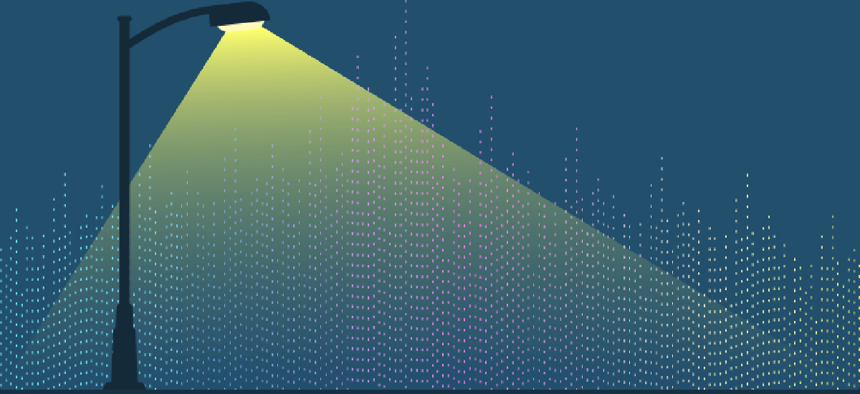Data from streetlights illuminate possibilities, problems


Connecting state and local government leaders
While cities are gaining unexpected insights from data streaming from LED streetlights, many may have trouble actually ingesting the volume of data.
Law enforcement officers in San Diego are using data to find and arrest criminals. On the surface, that’s not particularly notable, but consider the data source: streetlights.
After deploying sensors last year on 2,800 of 14,000 new LED streetlights, San Diego officials are seeing potential uses for data in areas they didn’t expect, including law enforcement.
“There’s been instances where people who probably would have been accused of crimes have been exonerated because of that information, and people it would have probably taken the police a long time to catch otherwise were apprehended because of the data,” said Erik Caldwell, deputy chief operating officer for the city.
That’s a significant difference from the insights into urban mobility and parking officials originally envisioned getting from the data. But even that use case has come with surprises. An early parking study revealed that the city gets upward of 90 percent parking utilization, when officials thought the rate was between 60 and 70 percent, Caldwell said.
It's not just the insights that are turning heads, it's the amount of data now available.
“Everyone had an expectation that we were going to have data that we didn’t have before, but the sheer volume is something that we need to spend some time navigating through,” he said.
The nodes, designed and operated by GE subsidiary Current, process the data at the network edge and send it to the cloud, where it’s aggregated and accessed through application programming interfaces.
As the city prepares to deploy another 1,600 sensors, it’s also trying to figure out what to do with all those bits and bytes. Managing it is “still a work in progress,” Caldwell said, but his team is working to add analytics and visualization applications that will make the data more meaningful and usable by city officials and the public alike. He foresees is providing real-time traffic data via maps to first responders for route planning, for example, or syncing the data to the city’s adaptive traffic signals to adjust lights when responders approach an intersection.
Another idea is to monitor population variations to better determine where police and fire personnel are needed. “Right now, we build fire and police stations based on where people live and work, but both of those things change based on time of day or year,” Caldwell said. When a cruise ship stops at the port, for example, thousands of additional people may spend the evening downtown, which is lightly populated during the day.
The city will have some public-facing tools ready in the next few months, Caldwell said, but he expects additional ones to be developed by civic organizations, universities, research centers and members of the public that have requested API access to the data.
“The data isn’t just for us to help us better run the city,” Caldwell said. His big dream is for someone to use the data coming off the streetlights to propose an idea “that the city had never thought of before," he said. "That would be a really cool moment."
Governments’ interest in smart streetlighting is growing, said Ruthbea Yesner, vice president of IDC’s Government Insights and Smart Cities division. It’s one of five use cases that together represent 34 percent of worldwide spending on smart city initiatives -- spending that is expected to reach $95.8 billion this year, up 17.7 percent over 2018, according to IDC.
Still, many cities could find themselves in situations similar to San Diego’s, wondering what to do with the data, she said.
“Really the sky is the limit in terms of the kind of data you could be collecting,” Yesner said. “What I think is a fundamental challenge for cities is actually ingesting the data.”
For one, the data can come in many forms and may be targeted for different departments. Additionally, a continuous stream of data is overwhelming and unhelpful. That’s where edge computing comes in, providing only the relevant information to users rather than all the information, she said.
Another challenge lies in how lighting is owned and operated in the United States. Cities may own some streetlights, while utilities own others, making ownership inconsistent from street to street. What’s more, utilities lack the motivation cities have to install sensors, so partnerships may be necessary -- along with discussions about data ownership.
“You have to think of it as a strategic initiative instead of thinking of it as, ‘I’m going to put lighting and get some extra stuff,’” Yesner said.
NEXT STORY: Census 2020: How IT can help with local counts




